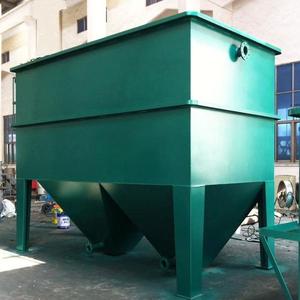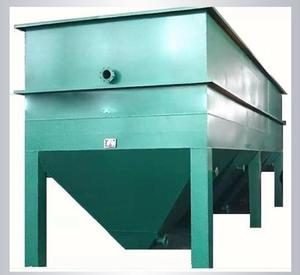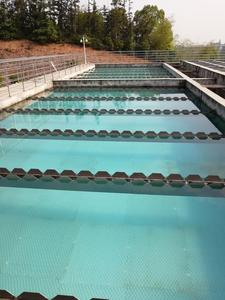
All categories
Featured selections
Trade Assurance
Buyer Central
Help Center
Get the app
Become a supplier

(59 products available)


















































Lake clarifiers are chemical coagulants used in water, pond, and lake treatment to make the water clearer by reducing the number of suspended solids. They can either be inorganic or organic compounds. Inorganic lake clarifiers include alum, polysal, ferric chloride, and lime, while chitosan is a widely used organic lake clarifier.
Specifications of lake water clarifiers may vary depending on the type, manufacturer, model, and other factors. Here are some commonly specified clarifiers of lakes and their specifications.
Flow rate
The flow rate of lake clarifier pumps indicates the amount of water a pump can transfer in a given period, usually in gallons per minute (GPM) or gallons per hour (GPH). For example, the flow rate of a centrifugal lake pump clarifier from 1 manufacturer is 2,740 GPH at 0 feet of open water. That means the clarifier pump can pump 2,740 gallons of water per hour if there is no water resistance.
Motor power
The motor power of a lake clarifier indicates the power output of the motorDriving Force and its power consumption, usually in horsepower (HP) or kilowatts (KW). For example, the motor power of a lake clarifier motor from one manufacturer is 2.0 HP. This means that the power output of the motor is equivalent to 2.0 horsepower.
Filtration system
Lake water clarifiers can come equipped with different types of filtration systems, such as sand filters, cartridge filters, or bag filters. For example, a clarifier may feature a cartridge filter with a 200-micron filtration size. This means that the filter will remove particles and debris as small as 200 microns from the water.
Lake size
Lake clarifiers are designed for different types of lakes or ponds. For example, some clarifiers are suitable for small lakes or ponds (up to 1 acre) and others for large lakes or ponds. A clarifier that is suitable for large lakes will have a larger storage tank (25 gallons, for example), enabling it to work for longer before needing to be emptied.
Suction method
Lake clarifiers can adopt different methods of suctioning pollutants from the bottom of the lake or pond. For example, some clarifiers may use a positive displacement diaphragm pump, while others may use a peristaltic pump. A peristaltic pump acts as a roller to move water through a hose, preventing debris from damaging the hose. The motor power of such a pump may be around 0.5 HP.
Maintenance
To keep the lake clarifier operating efficiently, the following maintenance procedures should be performed on a regular basis:
The application of lake clarifiers has created a ripple effect, benefiting various industries.
Swimming Pools
Pools can be seen as lakes in a very controlled environment, and pool managers are very aware of the need to keep the water clear and safe for swimmers. Lake clarifiers are pretty useful in this scenario, as they help pool managers improve transparency and make chemical management very easy.
Agricultural Irrigation
There are large lakes and reservoirs that serve as water supply sources for many agrarian setups. The water needs to be clear and clean in order for the crops not to be affected negatively. By applying lake clarifiers, farmers can improve the quality of water that is supplied to crops, thus, boosting yields. Farmers also make use of lake clarifiers to prevent the spread of diseases to crops and livestock by any form of microbial contamination.
Wetland Restoration
Many ecosystems rely very much on lakes. While some lakes get algae blooms that ruin the ecosystem, there are clarifiers that can save the ecosystem. Lake clarifiers can be used to restore the biodiversity of wetlands. They also help in the interplay between many species that thrive in the wetlands.
Municipal Water Supply
Many water treatment plants make use of lake clarifiers in their processes, especially for the treatment of organic matter. Lake clarifiers help reduce the cost of chemicals that are usually needed for water to be potable. After the treatment process, the water is then supplied to many households for domestic use.
Industrial Water Sources
Industrial water sources also make use of lake clarifiers, as they can improve the quality of water that is supplied for various industrial processes. By making the use of lake clarifiers, industries will use fewer chemicals, and equipment will be thoroughly protected from any form of build-up or scaling.
Fisheries Management
Analysis of Lake Water Contamination:
When purchasing lake clarifiers, it is crucial to analyze the factors contributing to lake water pollution. Various elements, such as organic matter, algae, silt, and other contaminants, may thrive in the lake. Different types of clarifiers possess unique features and functionalities that cater to specific contaminations. For instance, clarifiers with strong coagulating properties may be chosen to eliminate silt and sediments.
Lake Size:
The effective coverage range of a lake clarifier is also a vital consideration. For large lakes, perhaps, multiple machines will be required to achieve the desired water quality. Also, the position where the clarifier functions should be taken into account. In relatively deep locations, high-performance submersible clarifiers may be utilized, whereas, for shallow areas, surface clarifiers or floating clarifiers will be applicable.
Cost and Budget:
When buying clarifiers for lakes, budget is a critical factor. While considering the effectiveness and features of the clarifier, buyers should also consider its operational cost and maintenance expense. Selecting clarifiers that offer a balance between cost-effectiveness and performance can contribute to the long-term management of lake water quality.
Environmental Sustainability:
In today's world, ecological preservation and sustainable development are of utmost importance. When purchasing lake clarifiers, individuals or organizations should consider the environmental impact of the clarifiers. Opting for clarifiers that utilize eco-friendly coagulants or operating methods can contribute to environmental protection and promote sustainable utilization of lake resources.
Q1: What should people do after using a lake water clarifier?
A lake clarifier will take some time to clear the water. Therefore, people should be patient after using the chemical. They can continue using the lake until the water clears. However, they should avoid swimming or drinking the water while they wait.
Q2: Are lake clarifiers safe?
Yes, most lake clarifiers are safe for people and aquatic life. Nevertheless, users should always follow the manufacturer's instructions to ensure safe and effective use.
Q3: How do lake clarifiers work?
When added to the lake, the clarifier chemical binds to the tiny particles, making the water murky. Once the particles clump together, they increase in size and become filterable. Some may also settle at the bottom of the lake.
Q4: How long does it take for a lake clarifier to work?
Lake clarifiers can start showing changes between 24 hours and 48 hours after application. However, the complete clarification process can take several days or even weeks, depending on the concentration of the pollutants and the volume of water in the lake.